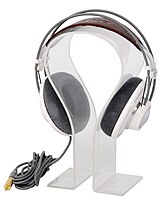
Photo from wikipedia
Cellulose-based materials have gained increasing attention for the development of low-cost, eco-friendly technologies, and more recently, as functional materials in triboelectric nanogenerators (TENGs). However, the low output performance of cellulose-based… Click to show full abstract
Cellulose-based materials have gained increasing attention for the development of low-cost, eco-friendly technologies, and more recently, as functional materials in triboelectric nanogenerators (TENGs). However, the low output performance of cellulose-based TENGs severely restricts their versatility and employment in emerging smart building and smart city applications. Here, we report a high output performance of a commercial cellulosic material-based energy harvesting floor (CEHF). Benefiting from the significant difference in the triboelectric properties between weighing and nitrocellulose papers, high surface roughness achieved by a newly developed mechanical exfoliation method, and large overall contact area via a multilayered device structure, the CEHF (25 cm × 15 cm × 1.2 cm) exhibits excellent output performance with a maximum output voltage, current, and power peak values of 360 V, 250 μA, and 5 mW, respectively. It can be directly installed or integrated with regular flooring products to effectively convert human body movements into electricity and shows good durability and stability. Moreover, a wireless transmission sensing system that can produce a 1:1 footstep-to-signal (transmitted and received) ratio is instantaneously powered by a TENG based entirely on cellulosic materials for the first time. This work provides a feasible and effective way to utilize commercial cellulosic materials to construct self-powered wireless transmission systems for real-time sensing applications.
Journal Title: ACS applied materials & interfaces
Year Published: 2021
Link to full text (if available)
Share on Social Media: Sign Up to like & get
recommendations!